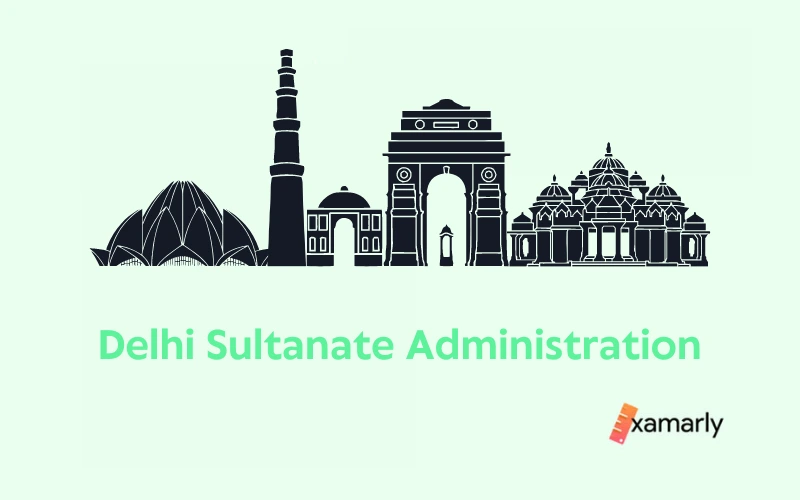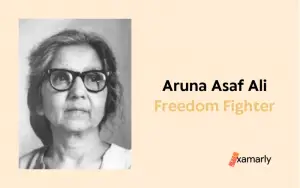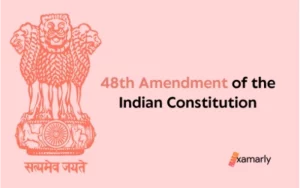The Delhi Sultanate was predominantly a Muslim sultanate. The Sultans reigned in India from the 13th Century to the 16th Century. They were the most prominent Muslim rulers that ruled over North India (and large parts of South Asia).
The Delhi Sultanate was ruled by five dynasties in succession: the Mamluk dynasty (also known as the slave dynasty), the Khilji dynasty, the Tughlaq dynasty, the Sayyid dynasty, and the Lodi dynasty.
The Delhi Sultanate changed the course of governance and administration in India. They had a systematic way of governance. For this purpose, the Delhi Sultans adopted Sharia law.
Modern historians are of the opinion that the Delhi Sultanate was essential in improving the functioning of provinces in India and laying the groundwork for the upcoming Mughal administrative system.
There are many things to learn about the life under Delhi Sultanate Administration. We will look at the central and revenue administration along with the cultural and artistic developments that happened related to Indian polity, economy, society and culture.
Read on to know more about how the Delhi Sultanate administered India. This piece of information on the Delhi Sultanate administration will be beneficial for the UPSC Exam preparation. This is a part of the Medieval History of India of UPSC Syllabus.
Also, check out Delhi Sultanate Questions and Answers for UPSC
- Central Administration of Delhi Sultanate
- Provincial Administration of Delhi Sultanate
- Local Administration of Delhi Sultanate
- Revenue Administration of Delhi Sultanate
- Army
- Culture and Society
- Architecture
- Delhi Sultanate Music
- Delhi Sultanate Literature
- Conclusion
- FAQs on Delhi Sultanate Administration
- Who founded the Iqtadari system of Administration?
- Was the spinning wheel invented during the Delhi Sultanate period?
- When was the Ragadarpan translated?
- Which dynasties were a part of the Delhi Sultanate of India?
- Who was the first ruler of the Delhi Sultanate of India?
- How did Agra develop under the Lodi dynasty?
- Where is the tomb of Ibrahim Lodhi situated in India?
Central Administration of Delhi Sultanate
The central administration of the Delhi Sultanate in India was methodically structured. In addition to the Sultan, there were also ministers with different duties and responsibilities.
The Sultan ruled with the help of ministers, including Naib, Wazir (the prime minister of the state and the head of the financial department), Diwan-i-risalat (the military department’s controller-general), and many others as his central government.
Central Department
| Name | Department |
|---|---|
| Diwan-i-Risalat | Appeals |
| Diwan-i-Kohi | Agriculture |
| Diwan-i-Mustakhraj | Arrears |
| Diwan-i-Khairat | Charity |
| Diwan-i-Insha | Correspondence |
| Diwan-i-Qaza-i-Mamalik | Justice |
| Diwan-i-Ariz | Military |
| Diwan-i-Ishtiaq | Pensions |
| Diwan-i-Bandagan | Slaves |
Central Officers
| Officers | Roles and Duties of the Officers |
|---|---|
| Wazir | Chief Minister in charge of the Revenue and Finance Department |
| Ariz-i-Mumalik | Head of Military Department |
| Qazi | Head of Legal Office |
| Wakil-i-dar | Controller of Royal Household |
| Barid-i-Mumalik | Head of State News Agency |
| Amir-i-Majilis | Head of Royal Feasts and Festivals |
| Majilis-i-am | Council of Friends and Officers consulted on State’s important affairs hair |
| Dahir-i-Mumalik | Head of Royal Correspondence |
| Sadr-us-Sudur | Head of Religious matters and Endowments |
| Amir-i-dad | Public Prosecutor |
| Naib Wazir | Deputy Minister |
| Mushrif-i-Mumalik | Accountant General |
| Amir-i-Hazib | Officer in Incharge of Royal Court |
| Qazi-i-Mumalik | Chief Justice |
| Qazi-ul-Kazat | Head of Chief Judicial Department |
| Amir-i-Akhur | Officer in Incharge of Royal Horses |
| Shahna-i-Pil | Superintendent of Royal Elephants |
| Amir-i-Bahr | Officer in Incharge of Police and Transport Naval Port |
Provincial Administration of Delhi Sultanate
A new ruling elite and a new administrative structure developed in India by the Provincial Administration under the Delhi Sultanate. There were many ministers, including many with specialized responsibilities.
In medieval India, provincial administration was centralized and governed by Iqtadars and Muqtis. These rulers provided the Sultan with troops and maintained public morality.
Iqtadars referred to the landowners. The Iqtas corresponding to an Iqtadar were further divided into smaller administrable units called Pargana, Shiqqs, and Village.
Provincial Officers of Delhi Sultanates
| Officers | Responsibilities |
|---|---|
| Amir | Governor |
| Mukti/Wali | Responsible to maintain Law and Order, Collection of land revenues and land taxes |
| Nazir/Wakuf | In charge of Collection of Revenue in Provinces (i.e. Revenue Collector) |
| Sahib-i-Diwan | Maintains Accounts of Provinces |
| Shiqdar | Officer in charge of Land Measuring a Shaq |
Local Administration of Delhi Sultanate
The administrative subdivision of the Delhi Sultanate in India came down to the smallest segment called the village. Local officials and Panchayats were in charge of local government in the Delhi Sultanates.
The administrators were in charge of many areas, including taxation, justice, cleanliness, and education. The Central Government made no involvement in the management of the Village.
| Officers | Role |
| Amil | Responsible for land revenue and other taxes |
| Hazamdar | Treasurer |
| Qazi | The civil official in charge of Developmental Records |
| Shiqdar | Criminal officials and Lawmaker |
| Kotwal | Police head under Shiqdar |
| Faujdar | Military in charge of measuring land |
| Qanungo | In charge of records of produce and assessment |
| Patwari | Village record keeper |
Revenue Administration of Delhi Sultanate
Revenue Administration in India belonged to two divisions during this time period:
- Judicial Administration – Here, the Sultan served as the paramount judiciary. Other officers like the Chief Judicial Officer and the Qazi worked under him.
- Military Administration – In this kind of administration, the Sultan acted as the Commander of the Army. The Army was further divided into the Royal Army, the Governor’s Army, the Feudal Army, and the social War-Time Army.
Types of Taxes
There were 5 types of taxes that were collected from people:
- Ushr – It was a land levy levied against Muslim peasants. It was 5% of the production from land with artificial irrigation infrastructure and 10% of the yield from land irrigated by natural resources.
- Kharaj – It was a land tax levied on non-Muslims that varied from one-third to one-half of the yield.
- Khams – It was one-fifth of the plunder seized during the conflict and one-fifth of the mines or buried wealth discovered.
- Jizya – Non-Muslims were subjected to a religious tax.
- Zakat – This was a religious tax. It was levied on wealthy Muslims, amounting to 2% of their income. Horse sales and purchases were subject to a 5% tax. Extra taxes were introduced by various rulers. For example, Ala-ud-din Khalji charged home tax and grazing tax. Firuz Tughluq imposed a certain irrigation tax on land that profited from the state’s irrigation systems.
Iqta System
Land revenue made up a major chunk of the Sultanate’s revenue. To help this collection, the Iqtadari system was developed during the reign of Delhi Sultan Iltutmish. Various people were assigned certain parcels of land known as iqtas. This system enabled flawless administration and revenue collection in India.
The Iqta System was a way for the Sultan to distribute lands and revenues among different people in his empire. Each area was administered by Muqtis, who were trusted agents of the Sultan.
Iqtas were assigned to nobles, officers, and soldiers. They held the titles of Naib Sultan, ‘Nazim might’, and ‘wali’, and were paid by the Sultan. The Iqta system also included a central government that monitored these lands and administered them.
Army
The Sultan’s power was based on his army. The Hindu-Muslim power was prevalent during this period. Despite the Sultan’s desire to solidify and expand his territory, he had to face many frictions and revolts from Hindu princes as well as subjects.
Furthermore, the Muslims were not unified. Muslim rulers of provinces also desired autonomous kingdoms. This resulted in their uprising against the Sultan. The majority of the Sultans fought Mongol assaults from the northwest as well. Thus, a strong army at the center became a need of the hour.
The decimal system was used to organize the army. In the cavalry, a Sar-i-Khail led a unit of ten horsemen, a Sipahsalar commanded a unit of ten Amirs, a Malik commanded a unit of ten Maliks, and a Khan commanded a unit of ten Maliks.
In the infantry, the same division organization was in use. The Sultan continued to be in charge of all the units, and he had the last say in who got promoted and who got fired. But, the weak rulers could not keep the army under control, and they were frequently overthrown by strong leaders.
Culture and Society
The Indian subcontinent has been invaded by Central Asians since ancient times. Unlike previous invaders who assimilated into the prevalent social system, the successful Muslim conquerors retained their Islamic identity and established new legal and administrative systems.
These challenged and, in many cases, superseded the existing systems of social conduct and ethics. It even ended up influencing non-Muslim rivals and opponents. They also developed new cultural codes that differed from existing cultural codes in several respects.
Most of the Muslims in India were those who had converted to Islam. This factor was also important in the synthesis of civilizations.
Within Hindu society, there was much change in the social structure and cultural practices. The Brahmins maintained their dominant social status. Associating with chandalas and other outcasts was subject to the most strict controls.
The Muslim section of society was divided into ethnic and racial clusters. Afghans, Iranians, Turks, and Indian Muslims formed restricted communities and seldom married.
Architecture
The art and architecture of the Delhi Sultanate was a rich period in the history of Indian architecture. Many famous monuments of India were constructed during this time. The mosques, tombs, and other architectural wonders that the Muslim nobles demanded were different from the previous huge structures and temples in India.
Both buildings’ exteriors had many arches and enormous domes as roofs. Hindu temple architecture and other native Indian forms seldom ever employed either of these aspects. Both sorts of structures forgo the figurative sculpture vital to Hindu temple construction and instead contain one huge room under a tall dome.
Some important monuments of India build during the Delhi Sultanate period are:
| Monument | Details |
| Qutb Minar | Victory Tower within the Qutb Complex during the Mamluk Dynasty. Firoz Shah Tughlaq added the current two levels, which were covered in red sandstone to replace the top story that was destroyed when it was struck by lightning in 1368 AD. |
| Adhai Din Ka Jhonpra | Mosque was commissioned by Qutb Al-Din Aibak in 1192 CE and was further enhanced by Iltumish in 1213 CE. |
| Tomb of Ghiyasuddin Tughlaq | The tomb complex contains the grave of Ghiyas-ud-Din Tughluq in the center, the other two are that of his son, Muhammad Tughluq, and his wife, Makhdum-i-Jahan. |
| Khilji Mosque | The Khilji mosque is Delhi’s oldest mosque that is still in use for prayer. The mosque was built in 1315-1325 AD by Khizr Khan, son of Sultan Alauddin Khalji. It is the biggest monument in the Dargah enclosure. |
| Moth ki Majid | The mosque was built by the Lodi dynasty |
| Lodi Garden | Lodhi or Lodi Gardens is 90 acres of a city park in New Delhi. The park contains many historical monuments such as the Tomb Sikandar Lodi and Mohammed Shah’s Tomb. The park is also home to several architectural works such as Shisha Gumbad or Bara Gumbad. |
Related Reading: Delhi Sultanate Monuments
Delhi Sultanate Music
Music was a significant aspect of the Sultanate period. It brought Islamic architectural styles to India and combined elements from both cultures. Musical instruments like the sarangi and the Raba began to be used.
Amir Khusrau brought ragas like Ghora and Sanam into mainstream music. He was also the Sitar’s inventor.
Pir Bhodan was a Sufi saint. He was considered one of the greatest musicians of his time. Raja Man Singh of Gwalior, a strong supporter of music, promoted the creation of the magnificent musical piece known as Man Kautuhal.
In addition to introducing new ragas and musical instruments, the Sultanate also promoted and fostered the development of ragas and fusions of Indian and Persian music.
Thus, music developed in India during the Sultanate’s reign.
Delhi Sultanate Literature
When Persian speakers assumed the sultanate of Delhi’s throne, the Persian language expanded throughout India, giving rise to the Delhi Sultanate literature. As soon as it became the official language, literary works in the language started to emerge.
Amir Khusro was a well-known author of the time and one of the first to produce Persian literature about Indian events. His inspiration came from everything he observed around him. His work gained recognition, and he rose to the position of court poet.
Despite Persian’s growing impact, Sanskrit was able to maintain its status as a major language in India during the period. Because they were more seasoned and well-known than poets who wrote in the new languages, many people favoured Sanskrit poets.
At Mithila, a Sanskrit study center was established. It preserved and continued the legacy of traditional Sanskrit literature.
Additionally, a considerable amount of work was being done in regional tongues. Sanskrit and Persian are two languages that are difficult for the typical individual to grasp. As several regional languages grew in popularity, literary work in them soon started to appear.
Al Beruni, Zia-ul-Barani, and Amir Khusrau are three famous scholars of India from this age. Amir Khusrau was otherwise known as the “Parrot of India”. This Persian poet is believed to have authored around 4 lakh couplets.
Al Beruni was motivated by the Bhagavad Gita and Upanishads. In his work Tarikh-ul-Hind, he discussed India’s socioeconomic situation.
Further, many Sanskrit texts were translated into Arabic and Urdu during this time. Zia Nakshabi translated several Persian works into his native tongue. His Tutu Nama, for example, was translated into Turkish and other European languages. The Sultanate also produced many hagiographies of Sufi masters and wrote morals of the heart.
Conclusion
Through this blog for UPSC preparation, you learnt that the Delhi Sultanate changed the course of administration in India. The Delhi Sultanate was remarkably well organized and systematic. It involved the establishment of an Iqtadari system, which specialized in land revenue.
Its implementation became the model for future dynasties. The resulting organization of the capital city of Delhi in India became the model for local government. While looking at a comprehensive history of India, it is necessary that we learn about the various administrative and cultural policies of the time.
FAQs on Delhi Sultanate Administration
Who founded the Iqtadari system of Administration?
Shamsuddin Iltutmish founded the system of Iqtadari.
Was the spinning wheel invented during the Delhi Sultanate period?
The origins of Charkha have long been a source of debate among historians. Some think the spinning wheel was developed in Ancient India between 500 and 1000 A.D.
Another school of thought believes it was invented in the Islamic world in the early 11th century. Yet, there are two distinct pieces of evidence that point to the Islamic world as the location of origin. To begin, the oldest artwork is from Baghdad in 1237.
Second, the first Indian mention dates from 1350, indicating that the Charkha came to India from Iran. Historians like Irfan Habib and Arnold Pacey are of the opinion that it got transferred from the Iranian market to the Indian during the reign of the Delhi Sultanate.
When was the Ragadarpan translated?
The Ragadarpan was a treatise on music. It was translated into Persian during the rule of Firoz Shah Tughlaq.
Which dynasties were a part of the Delhi Sultanate of India?
The Delhi Sultanate was ruled by five dynasties in succession: the Mamluk dynasty, the Khalji dynasty, the Tughlaq dynasty, the Sayyid dynasty, and the Lodi dynasty.
The Sultanate was founded by the Ghurid conqueror Muhammad Ghori. As a successor to the Ghurid dynasty, the Delhi Sultanate was originally one of a number of principalities ruled by the Turkic slave-generals of Muhammad Ghori.
The Mamluks were deposed in the Khalji revolution, which marked the transfer of power from the Turks to a heterogeneous Indo-Muslim nobility. Khalji’s rule saw a new wave of rapid Muslim conquests deep into South India.
The sultanate finally reached the peak of its geographical reach during the Tughlaq dynasty, occupying most of the Indian subcontinent under Muhammad bin Tughlaq. This was followed by collapse as a result of South Indian reconquests, Hindu kingdoms like the Vijayanagara Empire and Mewar claiming independence, and other Muslim sultanates like the Bengal Sultanate breaking away.
The Sultanate was overrun and replaced by the Mughal Empire in 1526.
Who was the first ruler of the Delhi Sultanate of India?
The first ruler of the Delhi Sultanate was Qutb al-Din Aibak. He was a former slave of Mu’izz ad-Din Muhammad Ghori who was also referred to as Muhammad of Ghor.
How did Agra develop under the Lodi dynasty?
Sikandar Lodi oversaw a drive for the destruction of temples, especially in the Mathura area. In addition, he relocated his government’s seat of government and court from Delhi to Agra, an old Hindu city in India that had been destroyed by raids and attacks during the early Delhi Sultanate period.
After the Delhi Sultanate ended, Sikandar built structures in Agra that feature Indo-Islamic architecture, and the city’s development continued during the Mughal Empire.
Where is the tomb of Ibrahim Lodhi situated in India?
In Delhi’s Lodi Gardens, the Shisha Gumbad is frequently mistaken for his tomb.
Ibrahim Lodi’s Tomb is really located in Panipat (a city in North India) next to the Dargah of Sufi saint Bu Ali Shah Qalandar, not far from the tehsil office.
Additionally, the tomb of Sikandar Lodi is located in the Lodi Gardens.






